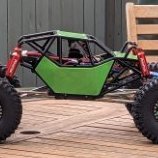Explain everything about motors to someone new
-
Recently Browsing 0 members
- No registered users viewing this page.
-
Latest Posts
-
- 16 replies
- 333 views
-
- 4 replies
- 51 views
-
- 13 replies
- 195 views
-
- 1,222 replies
- 97,508 views
-
- 44 replies
- 1,766 views
-





Recommended Posts
Join the conversation
You can post now and register later. If you have an account, sign in now to post with your account.